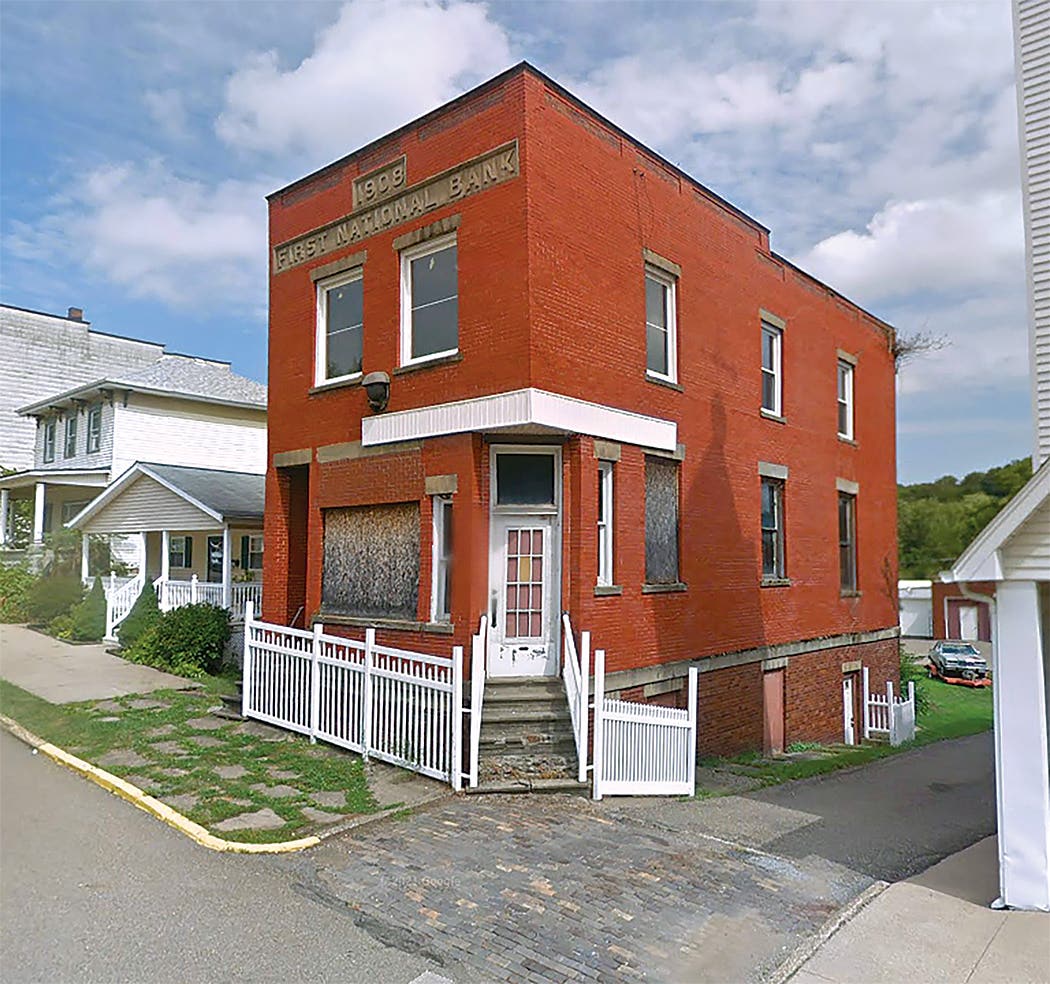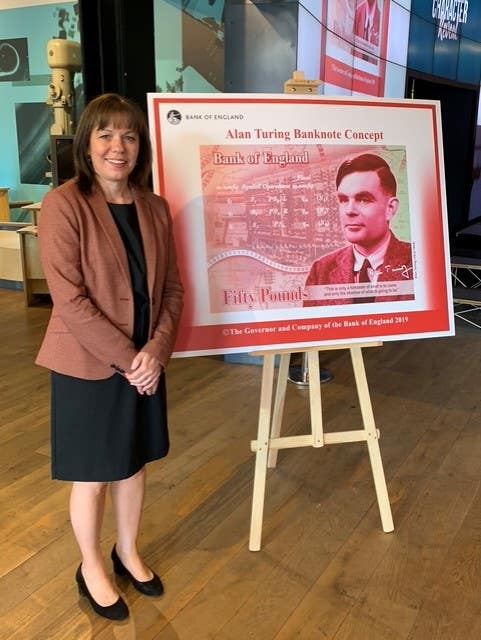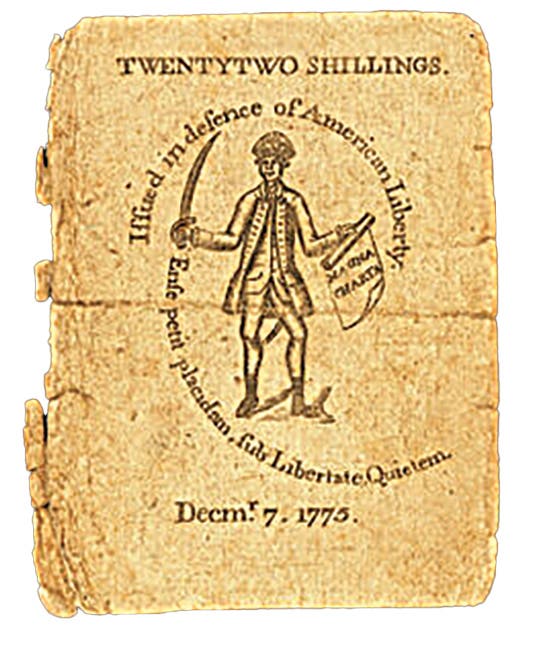Huntingburg—An Old Friend
Huntingburg is a small city in Patoka Twp., DuBois County, Ind., located in the far southwestern part of the state, with a current population of just over 6,500.
Indiana, for whatever reason, always impressed me as a quintessentially Midwestern state. Others might well suggest Iowa or Kansas, but I have made some travels in Indiana, and the well-kept classic nature of its towns made me think of the Midwest. I have maintained a small but well-thought-out collection of Indiana notes for some years. A recent addition and a sort-of old friend brings us this wintry month on a visit to Huntingburg, Ind. Let’s go!
Huntingburg is a small city in Patoka Twp., DuBois County, Ind., located in the far southwestern part of the state. It has a current population of just over 6,500. During the height of the national currency era, between 1910 and 1930, the city had an average population of around 3,200. The town has a classic downtown area on the National Register of Historic Places. It is known locally as the “Hollywood of the Midwest,” as several major motion pictures were filmed there, including A League of Their Own (1992).
Colonel Jacob Geiger, a veteran of the American Revolution from Louisville, Ky., purchased 1,920 acres of land from the Federal Government to establish the village he called Huntingburg. He came there in 1840 to live until his death in 1867. It was through Mr. Geiger’s generosity of donating land that the town’s first churches, schools, public buildings, and cemeteries were established. The name Huntingburg was selected due to the abundance of wild game in the area. A post office was established in 1842.
By the 1880s, Huntingburg was the major town of DuBois County and was situated at the junction of the Evansville Branch and the main stem of the Louisville, Evansville, and St. Louis Railroad. The population of the town consisted mainly of German immigrants and their descendants. Tobacco and wagon factories were mainstays of the local economy. In 1889, a large fire swept through the town, destroying most of the commercial structures which at the time were constructed of wood. An extensive rebuilding project, using locally made brick, was embarked on to create an impressive all-brick downtown area. The most repeated architectural style in Huntingburg is Italianate. This was a new style that swept America in the mid-19th Century, with both homes and public buildings being built in this style borrowed from Italian villas. The Italianate style quickly became the most common architectural style, thanks to the ease of access and the low cost of its decorative elements. This style was used on two- and three-story commercial buildings with flat roofs, and it remained popular in the 20th century.
Banking in Huntingburg was originally dominated by the Huntingburg Bank, which opened in the 1880s and constructed a beautiful bank building in 1897, which still stands today. National banking did not come to Huntingburg until 1907 when the First National Bank of Huntingburg received charter #8929 and opened for business. The first officers were Charles Moenkhaus, president, and W.E. Gassaway, cashier. This was not a very large issuing bank; indeed, in over 28 years of operations during the National Currency era, just shy of $375,000 in currency was issued. Starting with the Series of 1902 Red Seal notes, the bank issued all manner of 1902 issues as well as small-size notes of both Type 1 and Type 2. Only $10 and $20 notes were issued by the bank, no $5 notes or high denominations. Just nine large and around 15 small notes are reported in the census.
Back in 1997, I was visiting a young friend who was then a freshman at Dartmouth College in New Hampshire. We decided to drive up to Montreal and take advantage of the cheap Canadian dollar. We were both interested in numismatics, so while visiting tourist spots in the city, we also stopped at the coin shops. At that time, I was just getting into national currency. At one of the shops, I was surprised to be offered three large-size Indiana nationals who had come to Montreal by way of Panama. All of them were scarce to rare notes, and one of them was from Huntingburg. I was able to buy them very advantageously and sold the Huntingburg note in a 1998 Currency Auctions of America Sale for the then very considerable sum of $800. I knew nothing of Huntingburg at the time, but the name stuck with me, and in later years, I hoped another Huntingburg would find its way to me. A few months ago, it did, and I was happy to add it to my collection. The best part was that it cost considerably less today than my first one realized in 1998. I have included a photo of it (with its beautiful pen signatures) as well as a Series of 1929 $20 note issued by the bank.
The First National Bank of Huntingburg operated out of its first structure on the southern corner of 4th and Main Streets in town, a building it constructed circa 1908. The bank only occupied a small first floor, with a dentist and other tenants upstairs. By 1919, however, the bank had outgrown its small digs. Accordingly, the bank, along with the local Masonic Lodge, contracted with the H.E. Boyle Company of Evansville to erect a new building in the Neo-Classical Revival style directly across 4th Street from its old building. It features a running bond of brick and mortar, both of a deep burgundy hue with accents of carved limestone. Its fluted Ionic columns with carved volutes, classical Greek shouldered window hoods, windowsills, window corner lozenges, and enhanced entablatures are all of native limestone. The building is still a bank and is now known as the Old National Bank of Huntingburg. I have included a postcard view of the original bank as seen circa 1915 and a view of that building as it appears today. Also included is a photo of the 1919 bank as it appears today.
Today, Huntingburg has a simply beautiful, well-preserved downtown, much of which is listed on the National Register of Historic Places. One of the grandest structures is the 1865 Old Town Hall and Fire Engine House, an outstanding example of Italianate design that housed the city government for many years even after the second story was considered unsafe for admittance. An earlier generation would have flattened it for six parking spaces, but the Huntingburg Foundation rehabilitated it, and it is in daily use by the senior citizens, the Huntingburg Chamber of Commerce, and the Huntingburg Foundation, as well as for numerous social events.
The Huntingburg Historic District includes many good examples of Italianate commercial buildings that show the influence of Italianate architecture in the district, seen in the sheet metal brackets and cornice, hooded windows, and elaborate brick craftsmanship. During the late 19th century, two companies locally owned in Evansville (Mesker Steel and International Steel) manufactured stamped metal and cast-iron storefront appointments and advertised them as “cheap” storefronts. Both are represented in Huntingburg as their company’s names are emblazoned on or stamped into plinths of structural elements. The Miller-Poetker Building (1890) and the Huntingburg Bank (1897) are among these well-preserved buildings. I have included photos of these buildings as well as the Old Town Hall (1865).
Huntingburg is easily reached off of Interstate 64. Exiting on US Route 231, it is just 10 miles north of the interstate. A lovelier Indiana town would be hard to fathom. I am glad I could finally find a nice large-size Huntingburg for my collection and present the city to you.








